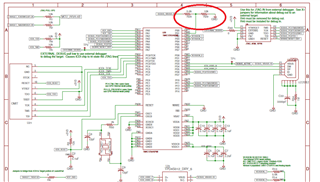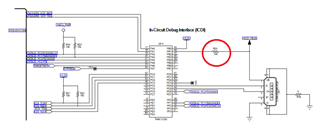Other Parts Discussed in Thread: TPS2051B
Hi, I'm using tm4c123gh6pz on custom boards and programming them troguh usb port with LM flash programmer DFU and ROM bootloader and I getting some parts damaged or heated.
I have connected D+ to PJ1, D- to PJ0, VBUS to PB1 and ID to PB0.
As I unserstand it could be caused by PB1 when configured as GPIO(default), so should I power up the board with the virgin microcontroller first to let the bootloader start and then conect the USB cable?
also it is necesary that ID pin is conected for DFU? if not, can cause problems if I left it conected to PB0?
Regards
Rafael



